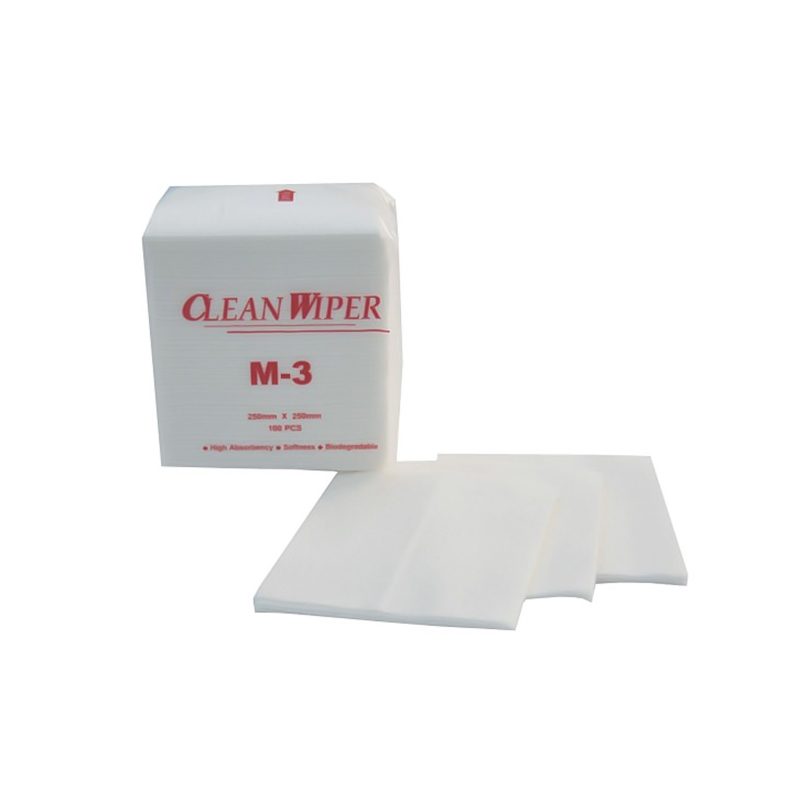A cleanroom is an environment where factors such as air, temperature, humidity, and contaminants are strictly controlled. It is widely used in industries such as semiconductors, pharmaceuticals, electronics, and aerospace. In these industries, Cleanroom Wipers are key tools for maintaining environmental hygiene and reducing contamination. Cleanroom Wipers have efficient cleaning capabilities and can effectively prevent the spread of particulate matter, so they play a vital role in cleanrooms. This article will explore the main applications of Cleanroom Wipers in cleanroom environments.
1. Surface Cleaning
In a cleanroom environment, surfaces such as various equipment, instruments, and work surfaces need to be kept highly clean to prevent interference from tiny particles and contaminants. Cleanroom Wipers are usually made of low-particle release materials such as polyester and nylon, which can effectively remove dust, oil, and tiny particles on the surface without leaving any residue. Different wiper materials and fabric densities can provide a variety of options according to cleaning needs, thereby meeting the cleaning standards of different work areas in the cleanroom.
2. Equipment Maintenance
Equipment in cleanrooms, such as electronic components, production line equipment, and test instruments, need to be cleaned regularly to ensure their stable operation. As an equipment cleaning tool, Cleanroom Wiper can clean these precision equipment without damage while avoiding additional contamination. Its low fiber shedding characteristics mean that no excess particles will be generated during the wiping process, reducing the risk of equipment failure or contamination.
3. Prevent cross-contamination
In some sensitive areas, especially pharmaceutical production and biotechnology laboratories, any slight contamination may lead to experimental failure or product quality problems. Cleanroom Wiper can effectively prevent cross-contamination. It is usually provided in sterile, single-package form to avoid contact with the outside world during use. Using different wipes in different areas can avoid contaminants from one area to another, ensuring that each area remains clean.
4. Clean liquid spillage
In clean rooms, liquid spillage is a common problem, such as chemical reagents, solvents or other liquids. If not cleaned up in time, these liquids will affect the working environment and equipment. Due to its high water absorption and fiber-free characteristics, Cleanroom Wiper can quickly absorb spilled liquids and clean up residual stains, helping to quickly restore the cleanliness of the environment.
5. Static Electricity Control
In some electronic product manufacturing or semiconductor processing processes, static electricity accumulation can have a serious impact on product quality and equipment. Some Cleanroom Wipers are made of antistatic materials, which can effectively reduce the generation of static electricity, thereby avoiding static electricity interference with sensitive equipment. By using antistatic Cleanroom Wipers, the static electricity environment can be effectively controlled while cleaning, protecting products from damage.
6. Use in Sterile Environments
In the pharmaceutical industry and the production process of medical equipment, the sterile environment of the cleanroom is crucial. Cleanroom Wipers are usually strictly disinfected and packaged in a dust-free environment to ensure their sterility. In these sterile environments, Cleanroom Wipers are widely used to clean and wipe various surfaces, such as sterile production equipment, pharmaceutical tools, and storage containers, to ensure that no external microbial contamination is introduced during the cleaning process.
7. Reduce Particles and Microorganisms
Cleanroom Wipers have excellent particle control capabilities, which can effectively remove particles in the air and on the surface, reducing the spread of microorganisms. The application of Cleanroom Wipers is particularly important in some fields where the number of particles and microorganisms needs to be strictly controlled. Its meticulous cleaning capabilities help maintain cleanroom environments in compliance with ISO standards, ensuring that every step in the production process is in a controllable clean state.

 中文简体
中文简体 English
English Español
Español русский
русский Deutsch
Deutsch Français
Français













